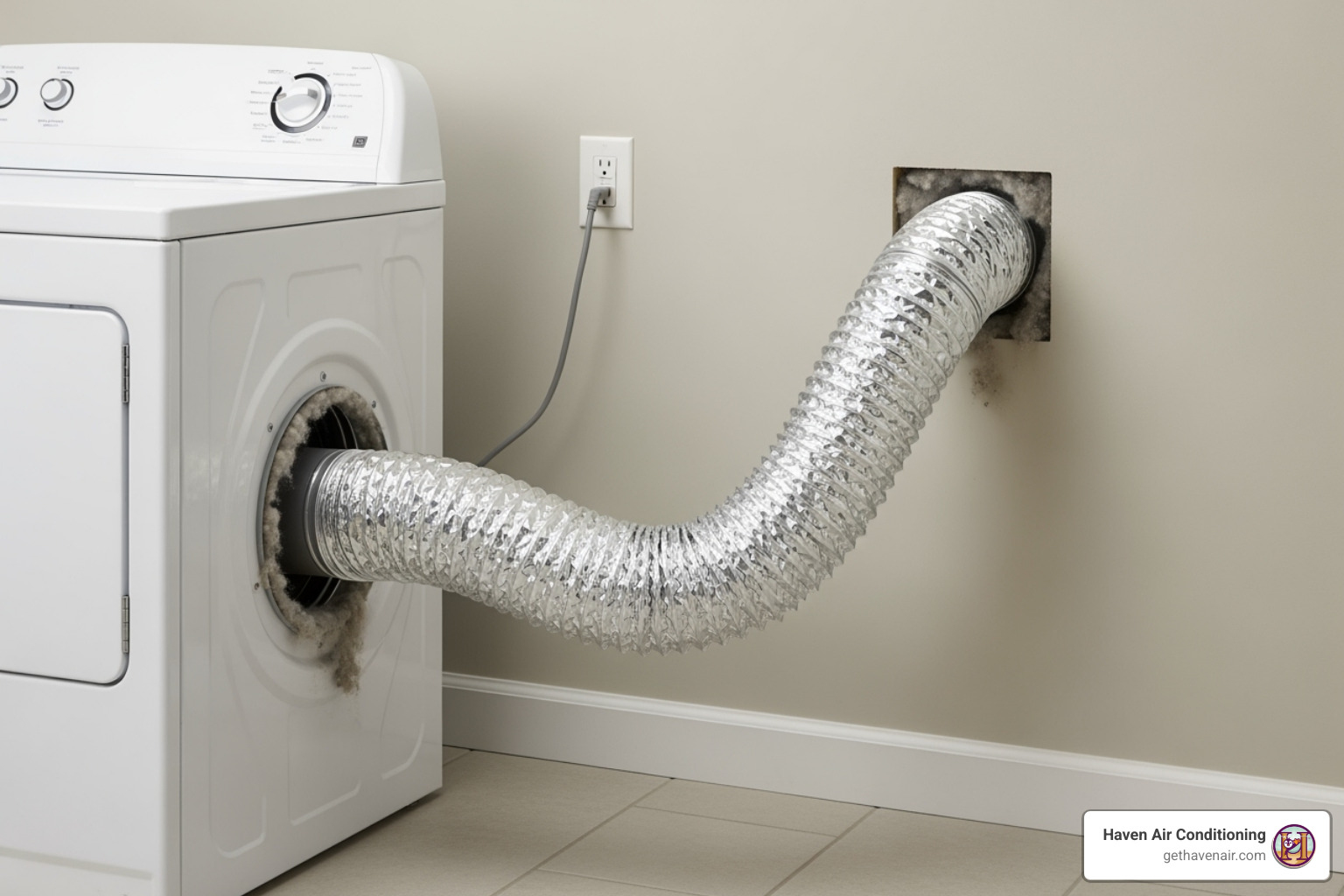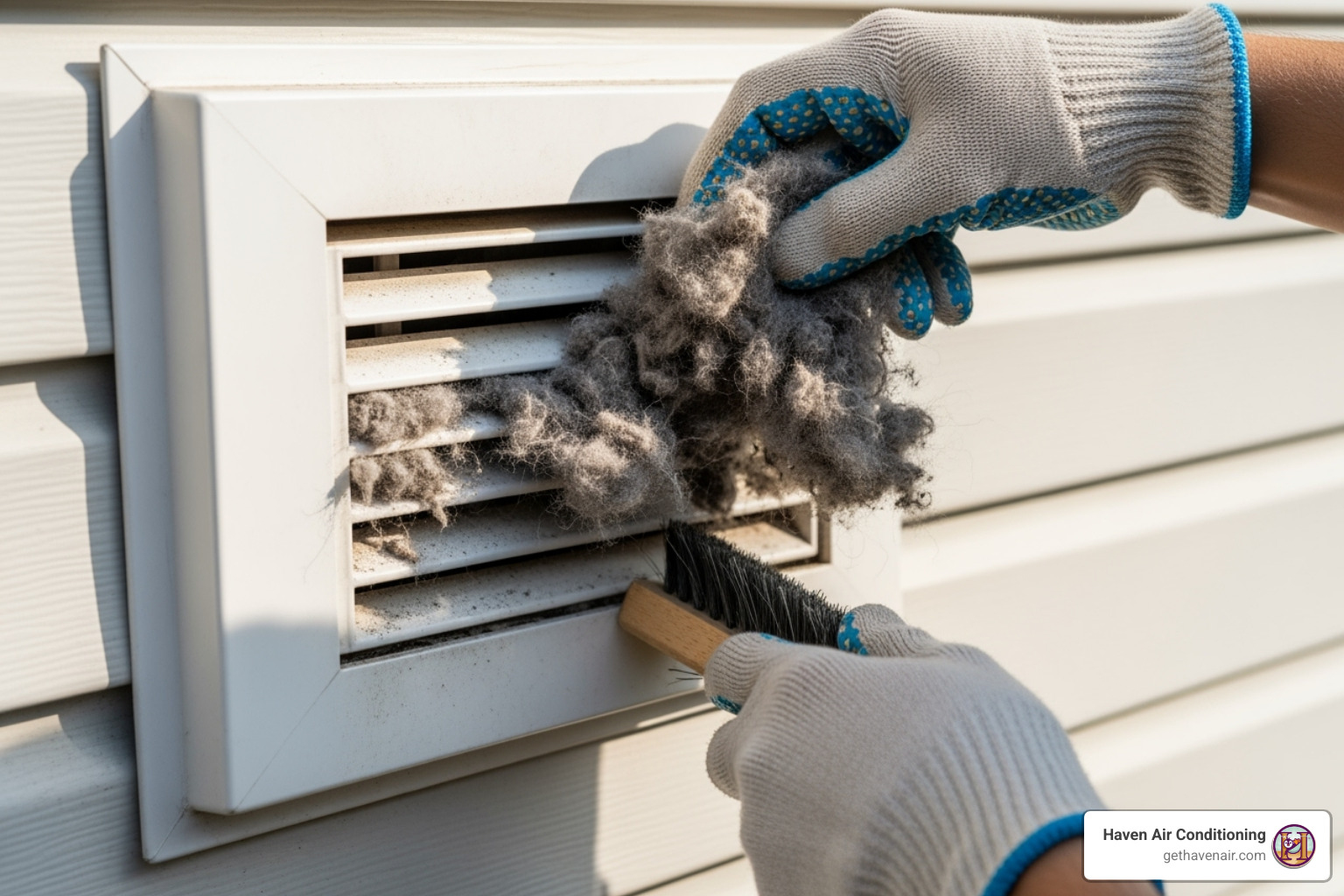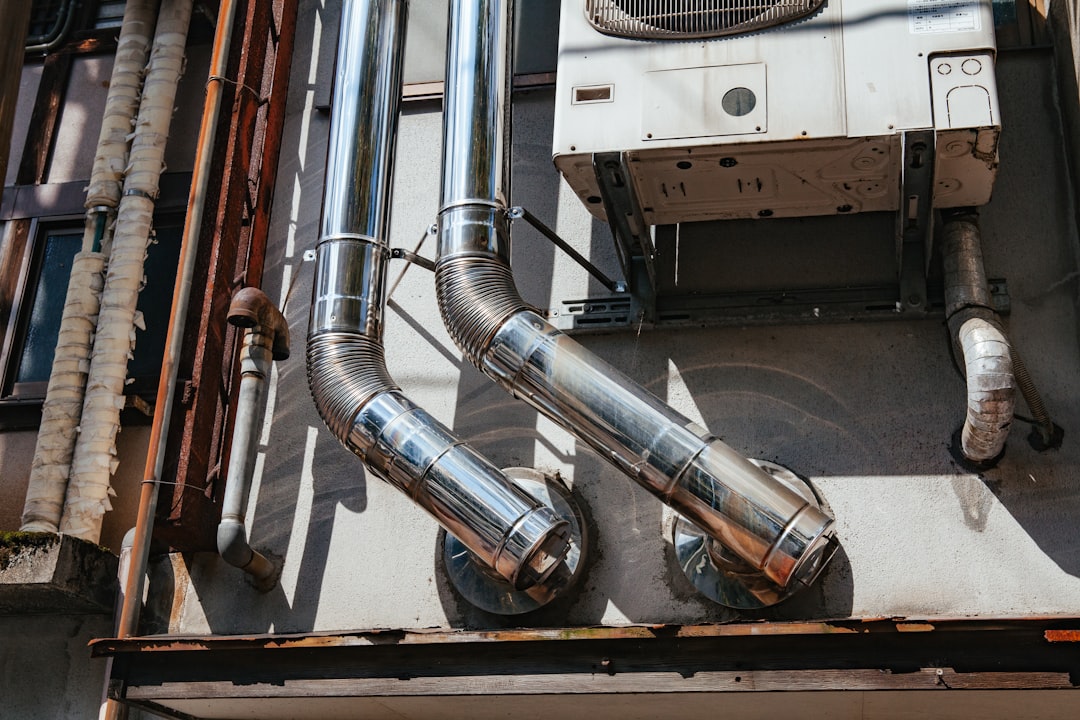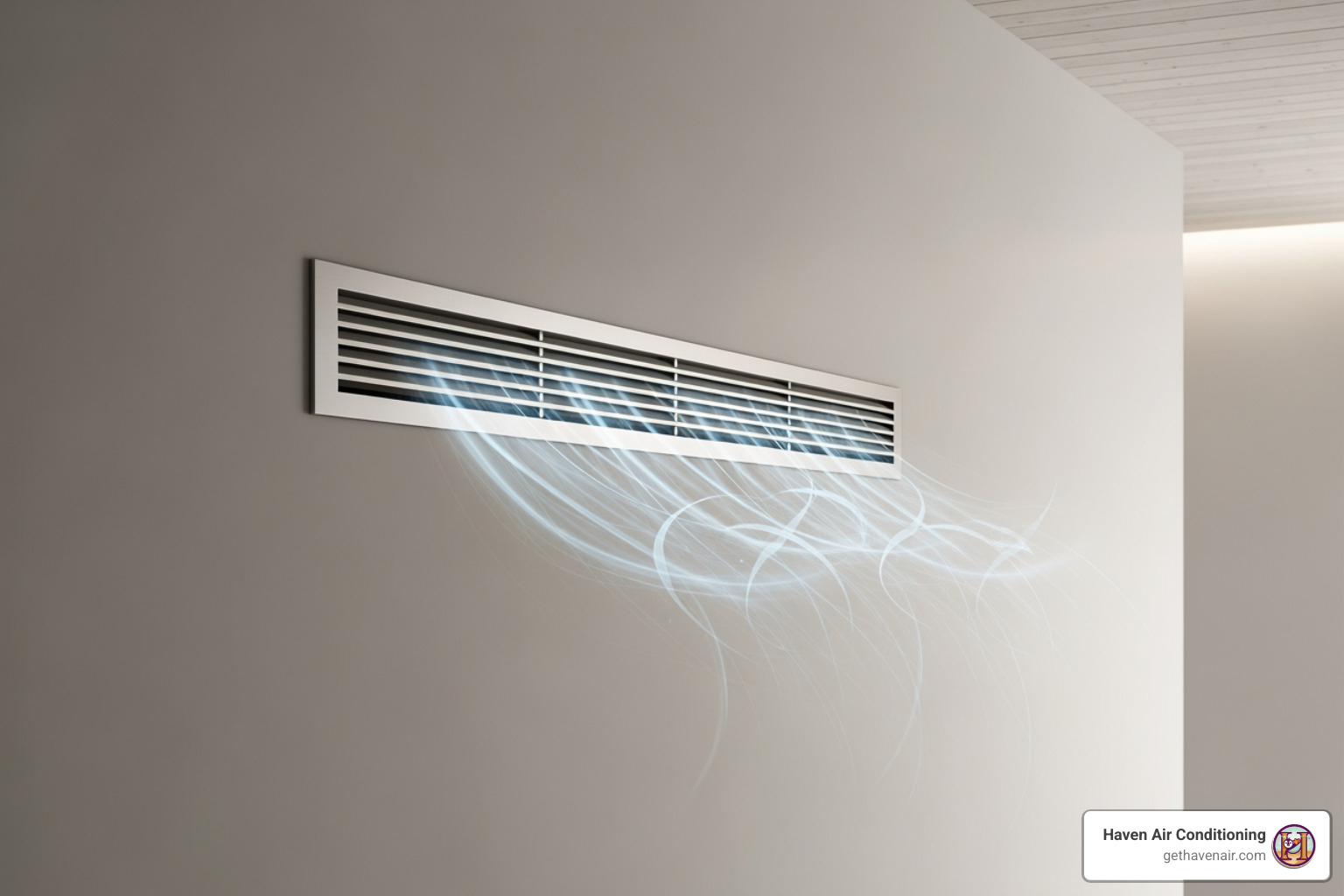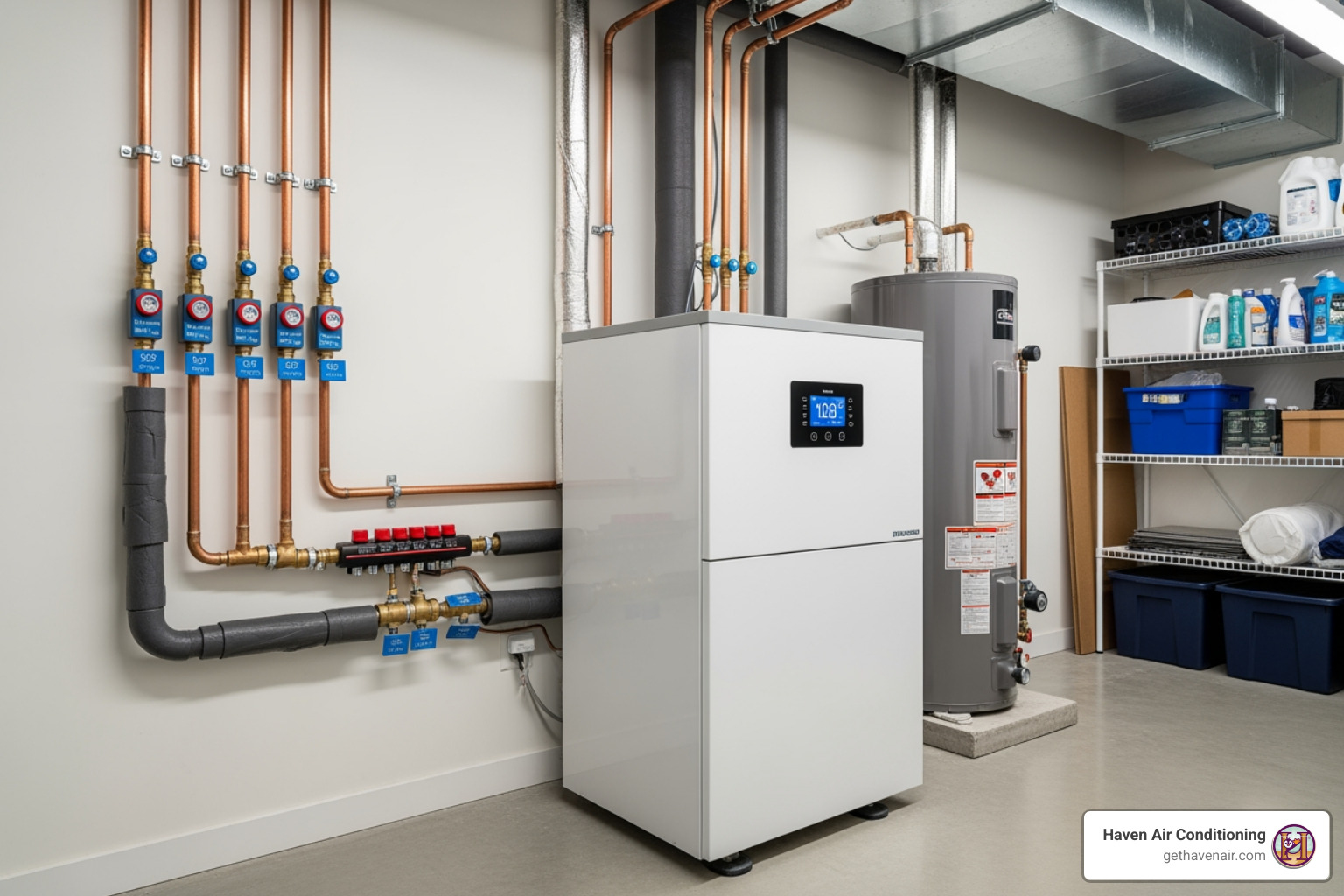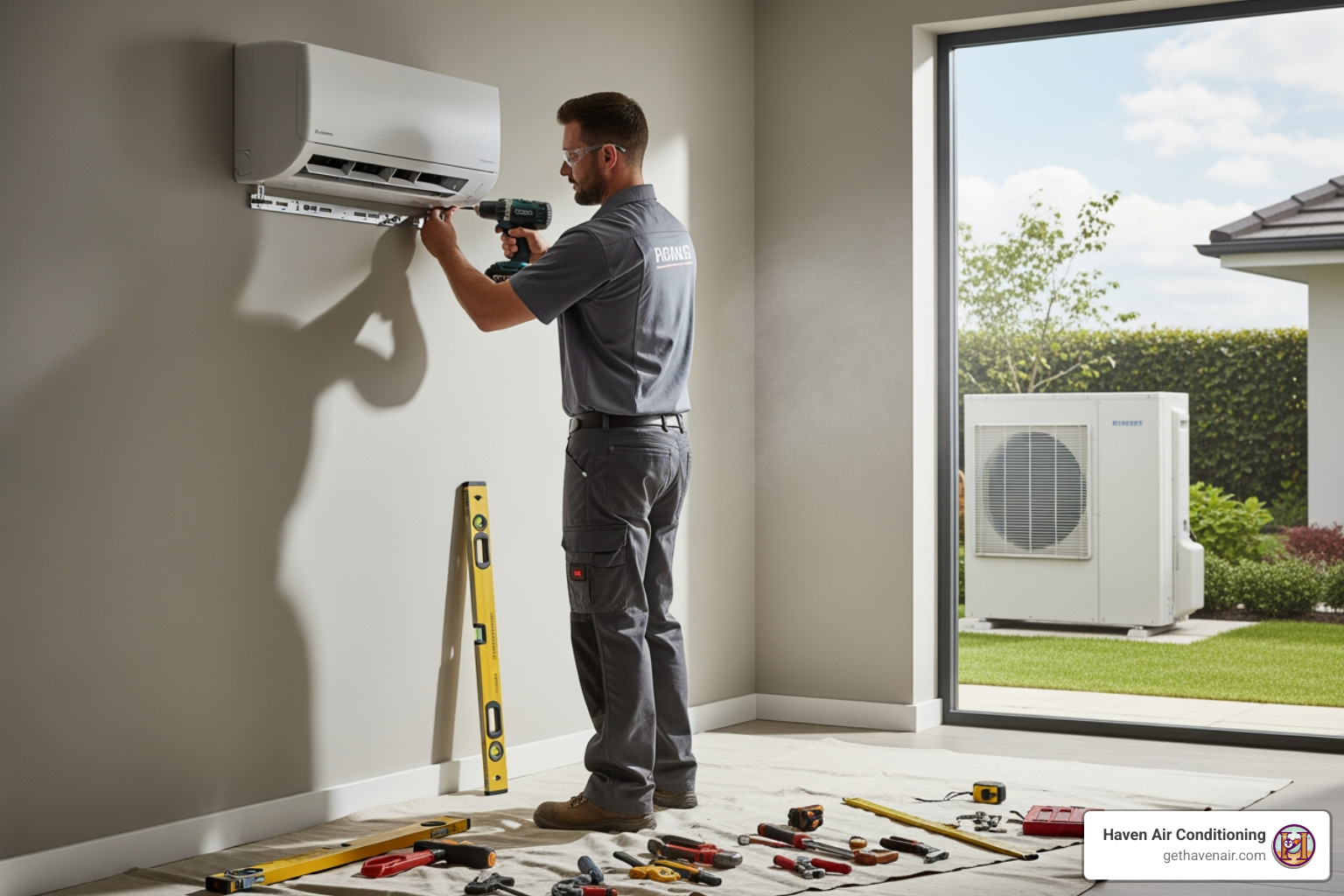Why Your Dryer Vent Deserves Your Attention Right Now
Clothes dryer vent cleaning is one of the most overlooked home maintenance tasks—yet it’s also one of the most important for your safety and wallet. Every time you dry a load of laundry, lint escapes the trap and accumulates in your dryer vent. Over time, this buildup restricts airflow, forces your dryer to work harder, and creates a serious fire hazard. In fact, the National Fire Protection Association reports that failure to clean dryer vents is the leading cause of home dryer fires.
Quick Overview: Why and How to Clean Your Dryer Vent
- Why it matters: Prevents fires, saves energy, extends dryer lifespan
- Warning signs: Longer drying times, burning smell, hot dryer exterior
- Cleaning frequency: At least once per year (twice for heavy use)
- Basic process: Disconnect dryer → Clean ductwork with brush kit → Vacuum debris → Clean exterior vent → Reconnect
- When to call pros: Long vents, gas dryers, or if DIY feels unsafe
If you’re experiencing any warning signs or haven’t cleaned your vent in over a year, you’re not alone—and you’re in the right place. This guide walks you through everything you need to know about keeping your dryer vent clean and your home safe. For homeowners in Orange County dealing with aging HVAC systems or seeking comprehensive home maintenance solutions, understanding proper ventilation throughout your home is essential.
Learn more about comprehensive duct cleaning services or schedule a professional inspection to ensure your home’s air systems are operating safely.
Why Dryer Vent Cleaning is a Non-Negotiable Home Maintenance Task
While big projects like roofing get all the attention, some of the most critical home maintenance tasks are hidden from view. Clothes dryer vent cleaning is a perfect example. Ignoring the lint building up in your dryer’s ductwork is a risk you don’t want to take. This simple task is about more than just fluffy towels—it’s about protecting your family, lowering your energy bills, and extending the life of your dryer.
The Fire Risk That’s Hiding in Your Laundry Room
The National Fire Protection Association reports that the leading cause of home dryer fires is failure to clean them. Lint is highly flammable, and as it builds up in your vent, it restricts the flow of hot air. This combination of intense heat and fuel can lead to a devastating fire. Regular clothes dryer vent cleaning is the number one way to prevent this.
Your Wallet Will Thank You
A clean vent also saves you money. When airflow is restricted, your dryer works harder and runs longer, driving up your energy bills. This extra strain also causes premature wear on components, shortening your appliance lifespan and leading to costly repairs. A clean vent means reduced drying times, lower utility costs, and a dryer that lasts for years.
A Hidden Danger for Gas Dryer Owners
For homes with gas dryers, a clogged vent poses an additional, silent threat: carbon monoxide. If exhaust fumes can’t escape outside, this odorless, deadly gas can be forced back into your home. A clear vent is the only way to prevent this carbon monoxide risk.
Breathing Easier at Home
Trapped moist air from a blocked vent can lead to mold and mildew growth in your walls and laundry area, which can trigger allergies and respiratory issues. A clean vent promotes better indoor air quality and allergen reduction. A clogged exterior vent can also be an open invitation for pests like rodents and birds to build nests, creating further blockages and unsanitary conditions.
Telltale Signs Your Dryer Vent is Clogged
Your dryer will often tell you when it needs attention. Look out for these warning signs:
- Longer drying times: Clothes take two or more cycles to dry.
- Excessive heat: The dryer and your clothes are hot after cycle ends.
- Burning smell: A distinct odor while the dryer is running indicates lint is overheating. Stop use immediately.
- Visible lint outside: You see lint and debris around the exterior vent opening.
- Humid laundry room: The room feels hot and humid when the dryer is on.
- Dryer is hot to the touch: The top or sides of the dryer are hotter than usual.
- Error codes: Some modern dryers display codes for airflow problems.
Your DIY Guide to Clothes Dryer Vent Cleaning
Ready to tackle this project yourself? For many homeowners, DIY clothes dryer vent cleaning is a manageable and rewarding task. With the right tools and a couple of hours, you can improve your dryer’s safety and efficiency. However, always prioritize safety; if you feel uncertain, call a professional.
Essential Tools and Materials
Gather these items before you start:
- Dryer vent brush kit: Look for one with flexible, extendable rods. A kit that attaches to a power drill will make the job easier.
- Vacuum cleaner with a hose attachment: A shop vac is best.
- Screwdriver or nut driver
- Sturdy gloves and a dust mask
- Metal foil tape or new clamps for reconnecting the duct (do not use standard duct tape).
- Flashlight
Safety Precautions Before You Begin
Safety is paramount. Before you start:
- Disconnect Power and Gas: Unplugging the dryer is a must. For a gas dryer, turn the gas supply valve to the “off” position.
- Wear Protective Gear: Use sturdy gloves and a dust mask to protect yourself from dust and lint.
- Ensure Ventilation: Open windows or doors for proper ventilation.
- Inspect for Damage: Check the duct for any tears or kinks. If you have a flimsy plastic or vinyl hose, upgrade to a safer rigid or semi-rigid metal duct.
- Be Gentle: Move the dryer carefully to avoid damaging the gas line or electrical cord.
The Step-by-Step Process for Clothes Dryer Vent Cleaning
- Disconnect the Dryer: Carefully pull the dryer away from the wall. Unplug it and shut off the gas supply if applicable.
- Detach the Duct: Use a screwdriver to loosen the clamp or remove the tape connecting the duct to the dryer and the wall.
- Clean Behind and Around: Vacuum the lint that has accumulated on the floor, behind the dryer, and from the dryer’s exhaust port.
- Clean the Ductwork: Insert your dryer vent brush kit into the duct opening in the wall. Attach it to a drill on a low, clockwise setting, or work it through manually. Push the brush through the entire length of the duct, extending the rods as you go. Have your vacuum running at the opening to catch the dislodged lint.
- Clean the Exterior Vent: Go outside and remove the exterior vent cap. Clean out any lint or debris, ensuring the flap can move freely. You can also use your brush from this end to ensure the entire path is clear.
- Reconnect and Test: Reattach the duct securely at both ends using metal foil tape or clamps, ensuring there are no kinks. Push the dryer back, reconnect the power (and gas), and run an empty air-dry cycle for 15-20 minutes to blow out any remaining dust. Check the exterior vent to confirm good airflow.
Maintenance Schedule and Professional Help
Now that you know how to perform a clothes dryer vent cleaning, let’s establish a routine. Consistent maintenance is the key to keeping your dryer running safely and efficiently.
How Often Should You Clean Your Dryer Vent?
As a rule of thumb, perform a thorough cleaning at least once a year. However, you may need to clean it more often—every 3 to 6 months—if you have:
- Heavy usage: Multiple laundry loads per day.
- Large families or pet ownership: More laundry and pet hair create more lint.
- A long or complex vent: Vents with multiple bends or long runs clog faster.
A simple preventative measure is to clean your lint trap after every single load. Also, make a habit of checking your exterior vent flap regularly to ensure it opens freely when the dryer is on.
DIY vs. Professional Clothes Dryer Vent Cleaning
While the DIY method works well for many, there are times when calling a professional is the safer and more effective choice.
Consider DIY if: Your vent is short, straight, and easily accessible. You are comfortable with the steps and safety precautions.
Call a professional when:
- You have a long or complex vent system (over 15 feet or with multiple bends) that a standard kit can’t clean effectively.
- You have a gas dryer and are not comfortable disconnecting and reconnecting the gas line.
- You want the peace of mind that comes with a thorough inspection and cleaning from a trained technician using specialized equipment.
- You suspect other issues like pest infestations or damaged ductwork.
At Haven Air Conditioning, our team offers professional clothes dryer vent cleaning with the right tools and expertise for any setup. We can also coordinate this with your regular duct cleaning for complete home ventilation maintenance. If you have any doubts about tackling this job yourself, reach out to us for safe, reliable service.
Frequently Asked Questions about Dryer Vent Maintenance
Here are answers to some common questions homeowners have about clothes dryer vent cleaning.
Can I clean the vent from the outside only?
While cleaning from the outside is better than nothing, it’s only a partial solution. This method only clears the last few feet of the duct and can sometimes push blockages deeper into the system. Most lint accumulates closer to the dryer and in bends along the duct run. For a thorough cleaning that removes all the lint, you must clean the entire duct from the inside (behind the dryer) to the outside.
What if my clothes still take too long to dry after cleaning?
If your drying times haven’t improved after a thorough clothes dryer vent cleaning, the issue may not be the vent. First, check for kinks in the hose behind the dryer, as it can get crushed when pushed back. If the hose is clear, the problem could be an internal dryer blockage or a failing component like the heating element or thermostat. In these cases, it’s best to call an appliance technician to diagnose and repair the machine itself.
Why does my dryer have a burning smell?
A burning smell is a serious fire hazard warning. Stop using the dryer immediately. The most common cause is trapped lint overheating in the vent or inside the dryer cabinet. It could also signal an overheating motor or an electrical issue. Unplug the dryer and perform a complete clothes dryer vent cleaning. If the smell persists after cleaning, do not use the dryer. Call a professional technician to inspect it, as this indicates a dangerous condition that could lead to a fire.
Keep Your Home Safe and Efficient with a Clean Dryer Vent
By now, you understand that clothes dryer vent cleaning is a critical task for your home. It’s not just about drying clothes; it’s about fire safety, energy savings, and ensuring an extended appliance life. A clean vent protects your family, lowers your utility bills, and prevents unnecessary wear and tear on your dryer.
Whether you choose to DIY or prefer the peace of mind that comes with professional service, taking action is what matters. At Haven Air Conditioning, our certified professionals in the Greater Orange County Area are equipped to handle this task with the attention to detail your home deserves. We ensure your entire ventilation system is clean, safe, and efficient.
If you’re ready for a professional clothes dryer vent cleaning, visit our duct cleaning services page to learn more and schedule a service. Don’t let this out-of-sight task be out of mind—a clean dryer vent is a cornerstone of a safe and efficient home.




